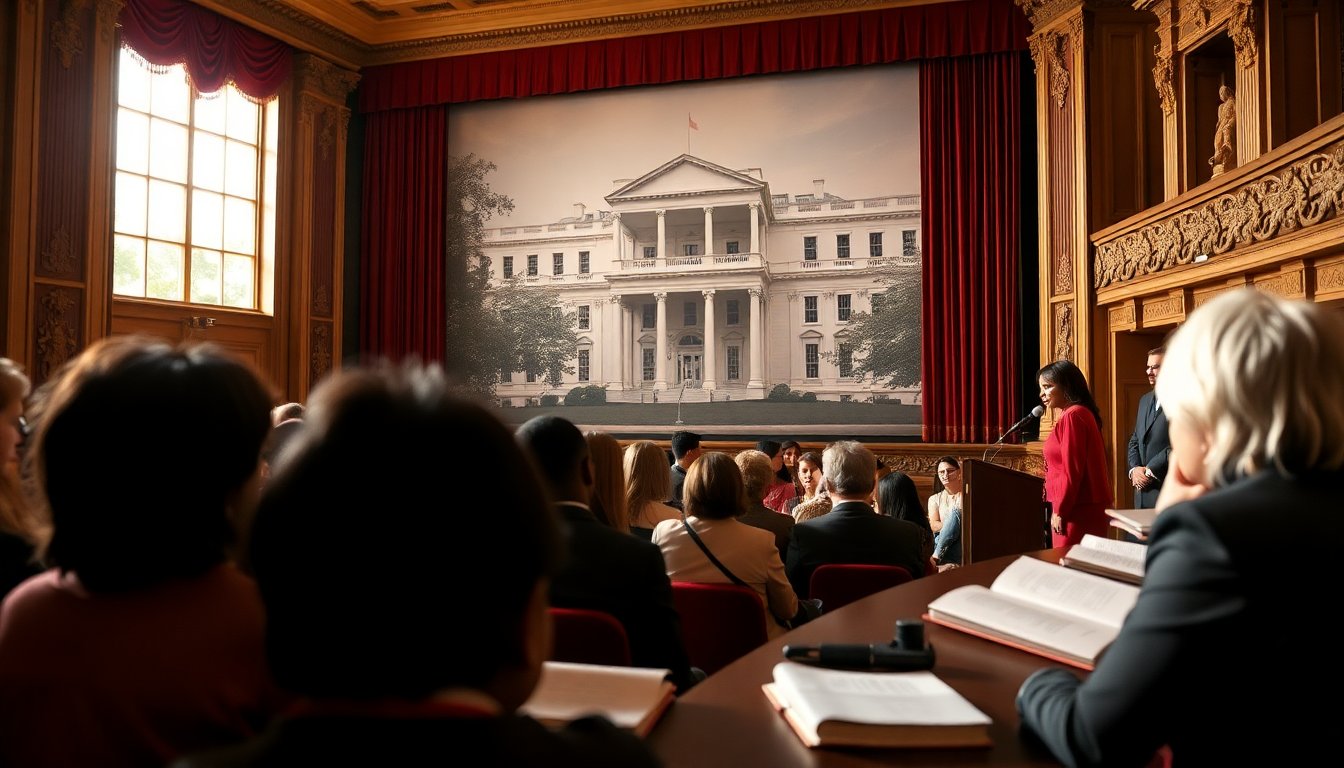Table of Contents
In a recent public appearance, former First Lady Michelle Obama addressed the controversial demolition of the East Wing of the White House, a project led by President Donald Trump. This discussion occurred during the launch of her new book, The Look, at Brooklyn’s Howard Gilman Opera House, where she reflected on the implications of altering such a significant part of the iconic building.
The East Wing, constructed during the administration of Franklin D. Roosevelt in 1942, has traditionally been the operational hub for the First Lady’s office. Staff oversee the White House’s social calendar, manage public initiatives, and engage in advocacy efforts.
Obama expressed how the recent changes reflect a broader shift in the perception of the First Lady’s role.
Significance of the East Wing
During her remarks, Obama emphasized that the East Wing has always been regarded as the heart of the First Lady’s work.
She stated, “When we talk about the East Wing, it is the heart of the work. To denigrate it, to tear it down, to pretend like it doesn’t matter—it’s a reflection of how you think of that role.” This sentiment underscores her belief that the East Wing serves crucial functions in humanizing the presidency and providing a balance to the more formal political operations of the West Wing.
Historical context and transformation
The Trump administration’s decision to demolish the East Wing is part of a larger $300 million ballroom project. This demolition, which occurred rapidly at the end of October, dismantled various components including the East Colonnade, the Family Theater, and the East Garden Room—areas that played significant roles in the operational framework of the First Lady’s staff.
Although the administration claims that these offices will be renovated and reconstructed, details surrounding the project remain vague.
Obama recounted how, during her time in the White House, the East Wing contributed positively to her husband’s administration. She noted that the public persona of her family, from their pets to their everyday life, added to the administration’s approval ratings and provided a necessary balance to the more serious work done in the West Wing.
“All the stuff we do on the East Wing, from the clothes I wear to Bo and Sunny to Malia and Sasha and grandma, those were five extra approval points that he got,” she explained.
Reflecting on the role of the First Lady
In her discussions, Obama pointed out that the current administration’s approach to the East Wing signifies a departure from a long-standing tradition of the First Lady’s role. She articulated that the East Wing has historically offered a glimpse into the personal lives of the First Family, fostering a connection with the public that transcends political divides.
Concerns about national identity
During an interview with late-night host Stephen Colbert, Obama further explored the emotional and cultural implications of the East Wing’s demolition. She articulated a sense of loss, stating, “The West Wing was work. Sometimes it was sadness, it was problems. It was the guts of the White House, and the East Wing was where you felt light.” This distinction highlights the importance of the East Wing as a space of respite and relatability amidst the pressures of governance.
Moreover, Obama raised concerns about the implications of the renovation choices being made under Trump’s administration. “What I will remind people is: that house is not our house. We never viewed it as our house. We were there for a time. We had a job to do. We always felt it was the People’s House,” she stated. This perspective reinforces the idea that each administration holds a responsibility to honor and maintain the historical integrity of the White House.
As the conversation around the East Wing continues, it becomes increasingly clear that the changes enacted by the Trump administration have stirred deep emotions and reflections among former First Ladies and the public alike. Michelle Obama’s insights not only reveal her appreciation for the historical significance of the East Wing but also serve as a reminder of the evolving nature of the role of the First Lady in American politics.





